Everything You Need To Know About Visiting The Biltmore Estate
The Biltmore Estate is the largest home in America, spanning 175,000 square feet or four acres of floor space. This French Renaissance château dominates in size yet does not compromise a single detail. The Biltmore Estate is a beautiful blend of excessive luxury, homely comforts, innovative technology before its time, and character greater than many competing mansions. The extravagant gardens are overwhelming, and the house is a wonder of architecture.
The mansion was built by George Washington Vanderbilt II and featured a mixture of European Colonial and French Renaissance styles.
The Biltmore Estate is a historical museum and a popular tourist attraction in Asheville, North Carolina. Although it is a popular public venue, the house is still owned by the Cecils – living descendants of the first Vanderbilt to occupy this wonderful home.

This post may contain affiliate links. Please read our disclosure and privacy policy for more information.
History Of The Biltmore Estate
The Biltmore Estate was built as the ultimate indulgence of George Washington Vanderbilt II. A descendant of Cornelius Vanderbilt’s “The Commodore,” the builder of Grand Central Depot in NYC and a pioneer of the Gilded Age in America. The building started in 1889 and ran through 1895, although the enormous estate was never completed. George welcomed his family on Christmas Eve, 1895.
Biltmore combines ‘De Blit’ – a small town in the Netherlands and ancestral home of the Vanderbilt family, and ‘Moor,’ the Anglo-Saxon term for ‘Rolling Land.’ The original Biltmore Estate spanned close to 125,000 acres. A few years later, due to newly introduced income taxes, the family sold 87,00 acres of the estate to the federal government. By 1930, the Great Depression made The Biltmore Estate even more challenging to maintain financially, so the family opened the house. The estate was designated a National Historic Landmark in 1963.
Today, the estate covers approximately 8,000 acres. Guests are invited to enjoy exploring the home’s interior and sprawling gardens.
Opening The Biltmore Estate to the public revitalized Asheville. This small city is a well-known destination that attracts thousands of visitors annually. The Biltmore Estate is also one of the largest employers in the Asheville area.
History Of The Build
George Washington Vanderbilt II, the grandson of the famous industrialist Cornelius Vanderbilt, commissioned the building. George loved the North Carolinian landscape. He would visit every year, but his memorable visit to the Blue Ridge Mountains in 1888 confirmed his desire to settle in the area and establish an estate that would stand for generations.
The prominent New York architect Richard Morris Hunt was the architect. Richard Morris Hunt built many Vanderbilt estates, including the famous Breakers and Marble House in Rhode Island.
Hunt designed the 250-roomed estate based on visits to French châteaus that he and William visited in 1889. Hunt used the French château as his inspiration for the building. He borrowed styles from Château de Blois, Clemenceau, Chambord in France and Waddeson House in England. It was prevalent for wealthy Americans to visit Europe for inspiration for these grand mansions during this era. All of them contain trophy pieces purchased for European estates. Many Gilded Age mansions have tapestries, chandeliers, paintings, carpets, and prints dating between the 15th and late 19th centuries.
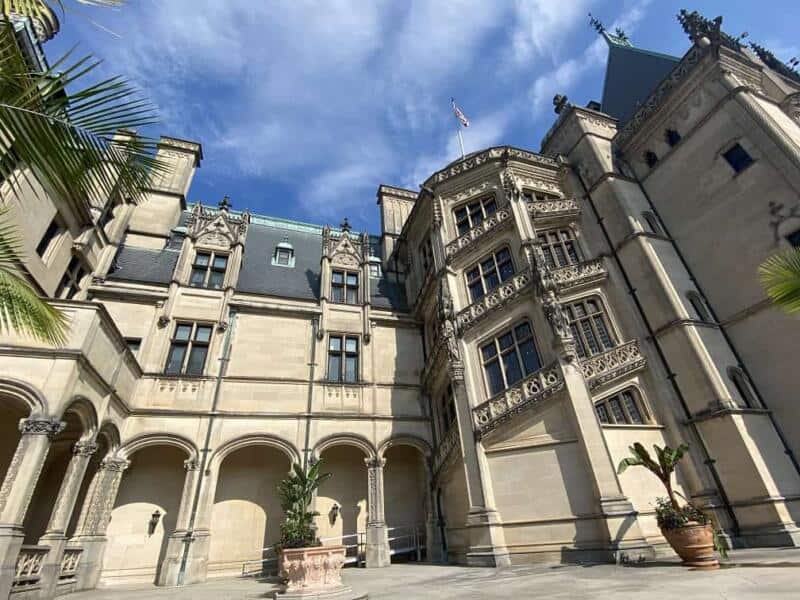
It took six years and an entire town of artisans to build The Biltmore Estate. And, despite this accomplishment, it was not 100% complete. For example, the music room remained unfinished until June 1976.
The Vanderbilt Family
George Washington Vanderbilt II married Edith Stuyvesant Dresser, a descendant of the first Dutch governors of New York, in 1898. Edith gave birth to their only daughter, Cornelia, the first Vanderbilt born at The Biltmore Estate. George Vanderbilt passed away unexpectedly in 1914 due to complications from an emergency appendectomy. Edith honored Vanderbuil’s wishes to keep the land unaltered; however, consolidated some of the estates in 1917. She continued to occupy the estate sporadically until her daughter Cornelia married John Francis Amherst Cecil in April 1924. At this point, the Cecil’s took up residency.
Cornelia and John had two sons, George Henry Vanderbilt Cecil (1925-2020) and William Amherst Vanderbilt Cecil (1928–2017), born on the estate. The Cecils divorced in 1934, and Cornelia left the estate, never to return. John continued to live at the estate until he died in 1954.
Their eldest son, George Henry Vanderbilt Cecil, lived at the estate until 1956. He ceased living there once the estate became a historic house museum.
Upon the death of Cornelia, their mother, in 1976, William Cecil inherited the estate, and George Cecil inherited the profitable dairy farm now known as Biltmore Farms.
One thousand nine hundred fifty, the two brothers came together to save the estate from financial ruin. They could carry on their grandfather’s vision of a self-sufficient estate, ultimately leading to a profitable enterprise.
In 1995, William Cecil turned over the company’s control to his son, William (Bill) A. V. Cecil, Jr. Bill Cecil, The Biltmore Estate CEO.
Anderson Cooper
Interesting Fact: George Washington Vanderbilt II was Gloria Vanderbilt’s great-uncle. Gloria Vanderbilt was Anderson Cooper’s mother. So, Anderson Cooper is the great-nephew of George Washington Vanderbilt II.
If you are not familar with Anderson Cooper he’s a reporter for CNN. Somone that I adore, someone that fights for justice and human rights.
The Vanderbilt Family Tree
This image is subject to copyright, and it may not be used without explicit permission from Brit on the Move.
Inside The Biltmore Estate House
I’ve visited many places, castles, and estates in various countries. If you are not a fan of historical homes, you may be like my other half and think if you’ve seen one, you’ve seen them all. I don’t see it this way. Unless you’ve visited The Biltmore Estate, you haven’t seen the best that America has to offer. Furthermore, The Biltmore Estate is the finest example of a 19th-century château comparable to some famous European ones.
I have explored The Biltmore Estate many times; however, during his summer during COVID, we virtually had the place to ourselves—a rare, unexpected treat.
The Biltmore stands out for a few reasons. One is evident to all – the sheer size. But size aside, the estate’s grounds are palatial. It is well-manicured with various sections, including a lake. The inside is very tastefully decorated with a classic countryside feel. Actually, for the most part, the interior is timeless. It does not have the over-indulgent tackiness of other estates that make your head spin. It’s not drowning in overdoes of color combinations. It’s undoubtedly not dripping in gold or gold paint, and it feels like home despite its enormity. There is a specific warmth about the interior of The Biltmore.
The house occupies over four acres and has a staggering 35 bedrooms, 43 bathrooms, and 65 fireplaces, three kitchens, and a historical Otis elevator for novelty.
The four-story house is set facing the east so that the 375-foot façade complements the beauty of the mountainous backdrop. The steeply pitched roofs feature sixteen working chimneys, and if you look closely at the flashing on the ridge of the roof, you will find George’s initials and motifs from the family crest.
The First Floor Rooms
I won’t cover every room – that’s impossible! Instead, I will share the highlights. I will cover the rooms by floor, not in order of how you may view them on your visit.
You enter through the main hall, which does not become decadent while large and dramatic. To the left is the magnificent staircase, and to the right is the winter garden. The winter garden is one of my favorite rooms. It takes the conservatory concept to new heights, literally and figuratively.
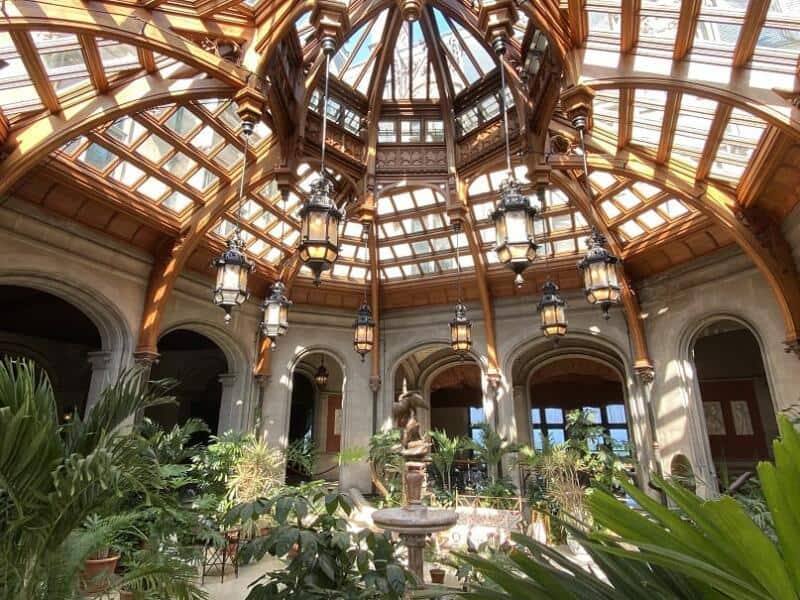
Then there is the billiard room that will impress anyone who enjoys social gaming. The gaming room connects the bachelor wing with a smoking room, gun room, and office.

Directly adjacent to the billiard room is the banquet hall. This banquet hall boasts three fireplaces, a seventy-foot high ceiling, and an organ gallery, and can seat sixty guests. I’ve seen this room before and am always amazed at the sheer size. It’s beyond imagination that this was a personal residence vs. a royal palace. I find myself drifting off into my imagination. I always wondered what it would be like to dine in this fine room.
Once you leave the banquet hall, you will go to the salon and music room, followed by the tapestry gallery. I’m not a fan of tapestry, even though I’ve created a few myself. The tapestry on display is dull. This said they are impressive and well placed throughout the gallery. I can’t even imagine how many hours it took to create one!
Then there is the library, another favorite of mine. The Biltmore Estate’s library is two stories high and contains over 10,000 books written in eight languages! But, some would argue that the elaborate ceiling is a focal point.
The Second Floor Rooms
The main rooms here are Mr. and Mrs. Vanderbilt’s adjoining bedrooms. Additionally, there are several guest suites on the second floor and staff chambers.
Mr’s Vanderbilts’ Bedroom:

The Third Floor Rooms
As you reach level three, you’ll see the second grand living room, several more guest suites, and the grand banquet hall that can be viewed from the third level. Not all tours allow you to view the banquet hall from the third floor, and some don’t allow access to the north and south tower rooms.
The Basement Rooms
If I had to give you one word to describe this basement, I would say “baller.” Remember, this house was built in 1895. During the 19th century, most homes did not have plumbing or electricity; the Biltmore has both! But there’s more. The basement is home to what can only be described as the ultimate play den. The basement has a bowling alley, a swimming pool, a state-of-the-art gym, and a Halloween room. The central kitchen is also located in the basement.
As you enter the pool area, it’s as if you are in a commercial facility. There are changing rooms for men and women. Not just a changing room but several designated ones for the Vanderbilts. The changing room layout reminds me of the Victorian Turkish baths of England.
The pool is 70,000 gallons large, heated, and has lights. The pool was filled from a direct line to a nearby mountain reservoir. Notice the ropes on the side. Back in the 19th century, many did not know how to swim. The ropes were added to give people something to hold on to if they got tired or could not swim. Another interesting fact about the pool is that it did not have a cleaning or filtration system. This resulted in the pool being drained and refilled every three days.
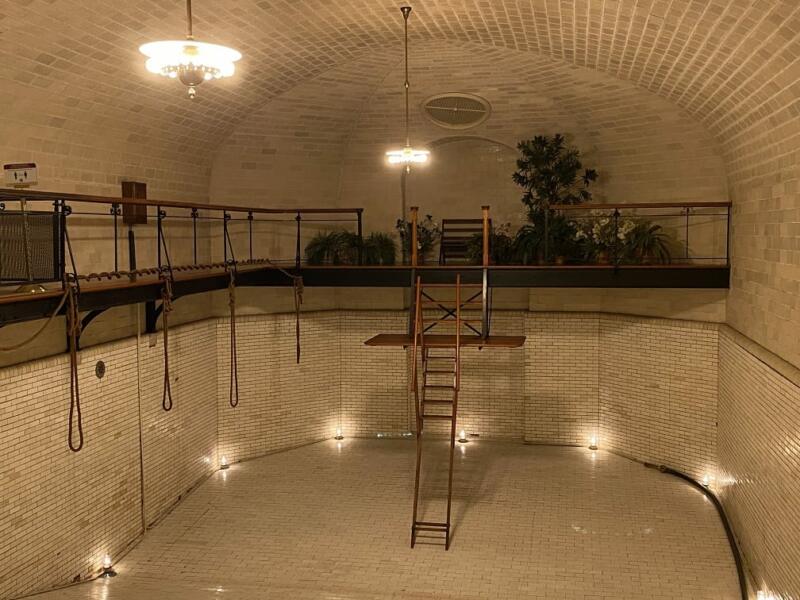
Books About The Biltmore & The Vanderbilts
I will confess that, typically, books are not my thing. However, when it comes to the Vanderbilts, I have several. Some purchased at The Biltmore, some online, and some from thrift stores. I’ve been fascinated with this family since visiting The Breakers many years ago. Here are some of the ones in my collection that I recommend. I love all these books, but my favorite is Little Gloria, which tells the story of Anderson Cooper’s mother’s childhood.
The Biltmore Estate Gardens
The Biltmore Estate consists of both formal and informal beautiful and meticulously maintained gardens. The gardens were designed by Frederick Olmstead, the era’s most famous and sought-after landscape designer. The lush landscape features ancient trees, and an all-American rose garden home to over 200 varieties.
The main house is the focal point. However, you only have to walk on the library’s terrace and take in the view to understand the grounds as just as impressive.
Conservatory
The Biltmore Conservatory is stunning and a real gem of The Biltmore Estate. Completed in 1985, the conservatory houses many exotic plants and rare fauna species. The large glass roof lets in a bounty of natural lights to illuminate the space, bringing the plants’ vivid colors to life.

Visitors can see the terraced butterfly garden and The Walled garden that lies just ahead through the beautifully crafted tall arched windows. The four-acre Walled Garden features 50,000 tulips each spring.
The conservatory is a popular spot for private functions and weddings for up to 75 guests.
Biltmore Bass Pond
The bass pond is a popular Biltmore feature, just 1.2 miles from the main house. The pond features a quaint boathouse perfect for sitting and relaxing in the sun. The boathouse itself is a humble structure that fits wonderfully into the landscape.
The walk to the pond is just as beautiful as the pond itself. In spring, the Azalea Garden is in full bloom, and visitors can enjoy a peaceful and beautiful walk around the ponds and soak up the fresh air and sounds of nature.
Pro Tip: Don’t miss the walk to the bass pond. It’s definitely a walk to get to but it is worth it! On the way down there are tons of meandering little trails and fairytale worthy bridges.
The Biltmore Waterfall
At the rear end of the bass pond lies a waterfall. This year was my first visit to the Bass Bond Waterfall. Unfortunately, it’s not a natural one. It is worth seeing, and the base is the perfect location for a picnic.
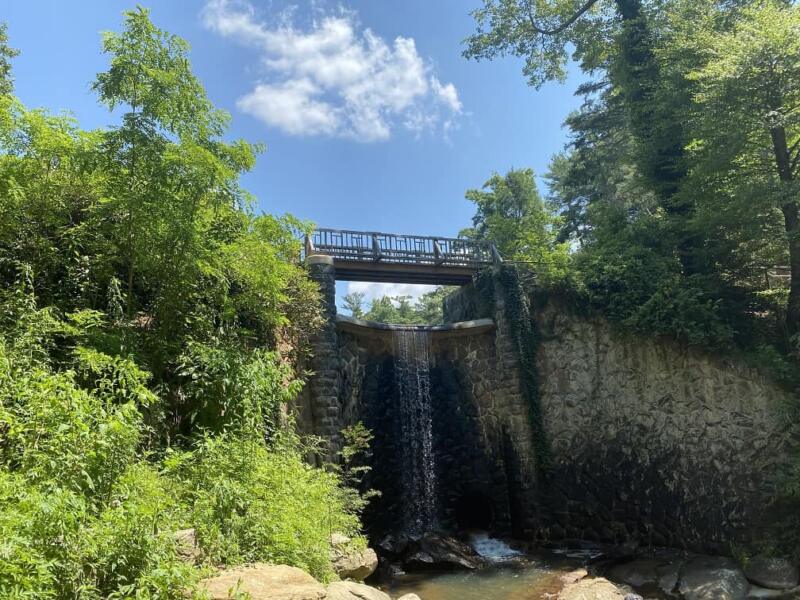
Things To Do At The Biltmore Estate
Visitors should see as much of The Biltmore Estate as possible. And there’s plenty to see and do besides a house tour. Here are some things you can do:
- Bikes are available for hire by the hour, so you are fellow travelers who can take a breath and enjoy moderate exercise.
- Book a private carriage ride around the estate, drawn by majestic pedigree horses raised right here.
- Take the rooftop tour and capture stunning views seen only from the house’s rooftop and balconies.
- Embark on The Biltmore House backstairs tour, which gives you a behind-the-scenes look at the rarely-seen domestic staff’s areas.
- Try Falconry – learn how to handle a trained hawk or falcon.
- Kayak – single or tandem and embark on a peaceful self-guided trip down the gentle French Broad River.
- Book a sporting clay lesson – learn proper gun mount, stance, target engagement, and other fundamental skills.
- Ride horses on the private horseback trail on a two-hour horseback ride.
- Try your hand at fly-fishing – fish at the lagoon following lessons.
And there is plenty more to choose from!
The Biltmore Estate Antler Hill Village
One cannot experience Biltmore in full without visiting Antler Hill Village.
The Village dates back to the estates’ earlier history. It is a social activity hub where guests can enjoy a luxury dining experience, shopping, and additional exhibits full of information about the area’s natural wildlife and history.
The Village has a hotel that welcomes guests throughout the year. The Village Green and Bandstand are where guests gather for some live entertainment. Sit back and enjoy a glass of wine to the orchestra’s sound. Antler Hill Village gives guests the perfect end to a perfect day on the estate.
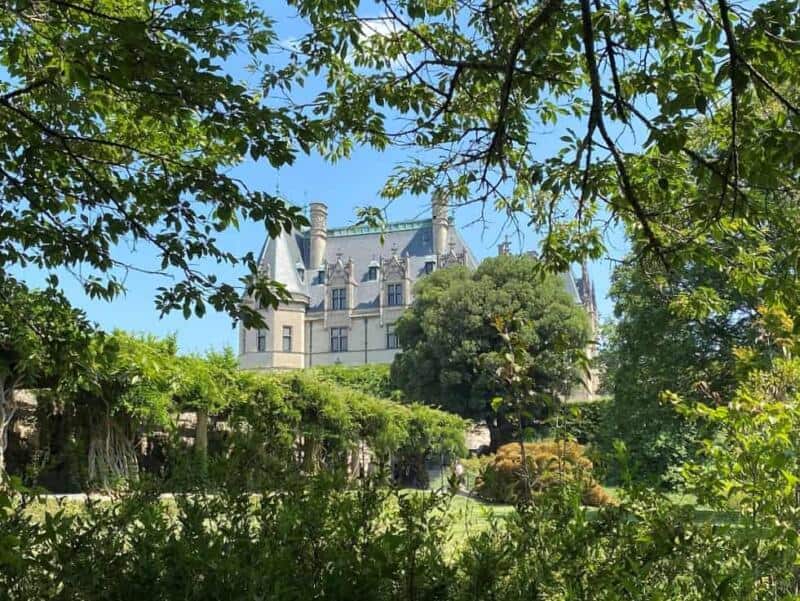
Winery At The Biltmore Estate
Biltmore is famous for its wines and wine-tasting experiences. All visitors can enjoy a complimentary wine-tasting experience in the tasting room. The wine experts will guide you through various award-winning vintages to get your taste buds tingling. After the session, guests are invited to unwind at the bar for charcuterie and locally sourced truffles.
Specialty experiences and scene winery tours are available for visitors who wish to extend their expertise.
The Biltmore Estate Farm
The horse barn was built in 1900 and housed the workers’ families that farmed Biltmore. The horse barn was the beating heart of Biltmore’s agricultural industry and stood as a testament to its past.
The farm offers a complimentary farm life experience on the estate, where you will be introduced to the Animals that still reside there. The farm is home to laying hens, calves, goats, and horses. Be sure to stop by and visit the famous dairy cows that still produce fresh milk for the Biltmore Creamery to this day.
Restaurants
Dining at Biltmore is an experience like no other. The estate has over seven restaurants that provide many dining options for all times of the day. Each restaurant features its estate-inspired specialty courses. Each restaurant is home to master chefs who create delicious dishes with fresh ingredients sourced from the estate.
Finding a restaurant is easy, and the variety is wide. You can treat yourself to a late bite at The Kitchen café or a gourmet dinner at The Dining Room; the hosts are ready and waiting to welcome you for a delectable dining experience.
Frequently Asked Questions About The Biltmore Estate
What does it cost to visit the Biltmore Estate?

Biltmore daytime admission tickets start at approximately $64 per adult. Prices vary by date. Kids ages 10-16 are half the price of adult admission. Kids aged nine and younger are admitted free.
Reservations are required every day for all guests, so plan.
You can choose from the following tours:
1. Self-Guided Visit to Biltmore House
2. Enhanced Experience: Audio Guide of Biltmore House
3. Exclusive Experience: Two-Hour Private Tour of Biltmore House
How long should you spend at the Biltmore?
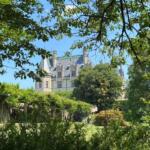
If you plan to see the house, gardens, and Antler Village, you need a whole day. If you only want to see the home, prepare for at least two hours.
Is there a dress code at the Biltmore?
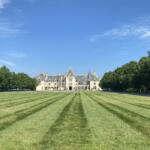
Not a formal one, but you will not be allowed entry in a bikini or other beach attire.
Does The Biltmore Estate have senior discounts?

No, there are no discounts available.
What is the Biltmore Estate famous for?

It is famous for being America’s Largest Home® and a National Historic Landmark.
Can you stay in the Biltmore Estate?

You can stay on-site at any one of these accommodations:
1. Village Hotel On Biltmore Estate
2. The Inn On Biltmore Estate
3. The Cottages On Biltmore Estate
I’ve yet to have the opportunity to stay on the grounds, but it’s on my bucket list!
Book Your Accommodations Here:
Closing Thoughts
If you are remotely interested in architecture or history, the Biltmore should be high on the top of your list of places to visit. I think it’s not just the largest home in America; it’s also the most exciting one to see!
Looking for more posts on Mansions Or Castles? Start here:
- Ca’ d’Zan – The Ringling Museum And Mansion
- Inside Hohenschwangau Castle – The Mad King’s Childhood Home
- Inside Neuschwanstein Castle, Germany’s Fairytale Castle
- Linderhof Palace – King Ludwig’s Country Retreat
- The Breakers, Rhode Island
- The Howey Mansion – Howey-in-the-Hills, Florida
- Why You Should Visi Liechtenstein’s Castles
We participate in the Amazon Services LLC Associates Program, an affiliate advertising program designed to earn fees by linking to Amazon.com and affiliated sites.
Brit On The Move™ Travel Resources
Ready to book your next trip? Use these resources that work:
Was the flight canceled or delayed? Find out if you are eligible for compensation with AirHelp.
- Book your Hotel: Find the best prices; use Booking.com
- Find Apartment Rentals: You will find the best prices on apartment rentals with Booking.com’s Apartment Finder.
- Travel Insurance: Don’t leave home without it. View our suggestions to help you decide which travel insurance is for you: Travel Insurance Guide.
- Want to earn tons of points and make your next trip accessible? Check out our recommendations for Travel Credit Cards.
- Want To Take A Volunteer Vacation or a Working Holiday? Check out the complete guide to how here!
- Want to Shop For Travel Accessories? Check out our Travel Shop.
Need more help planning your trip? Visit our Resources Page, which highlights the great companies we use for traveling.
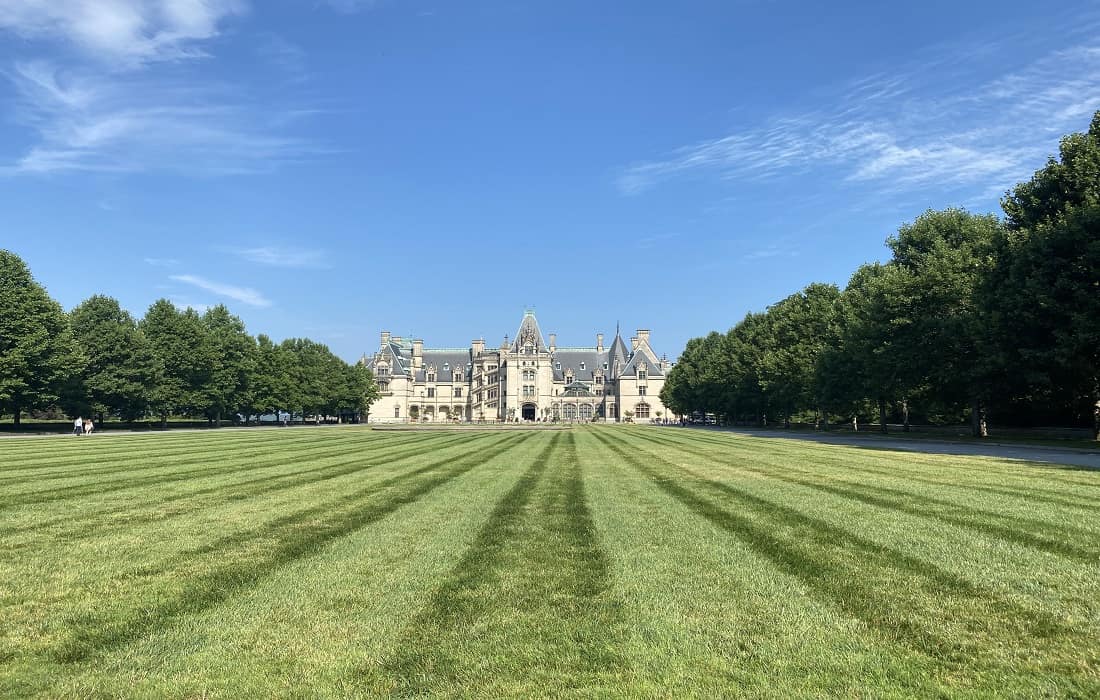

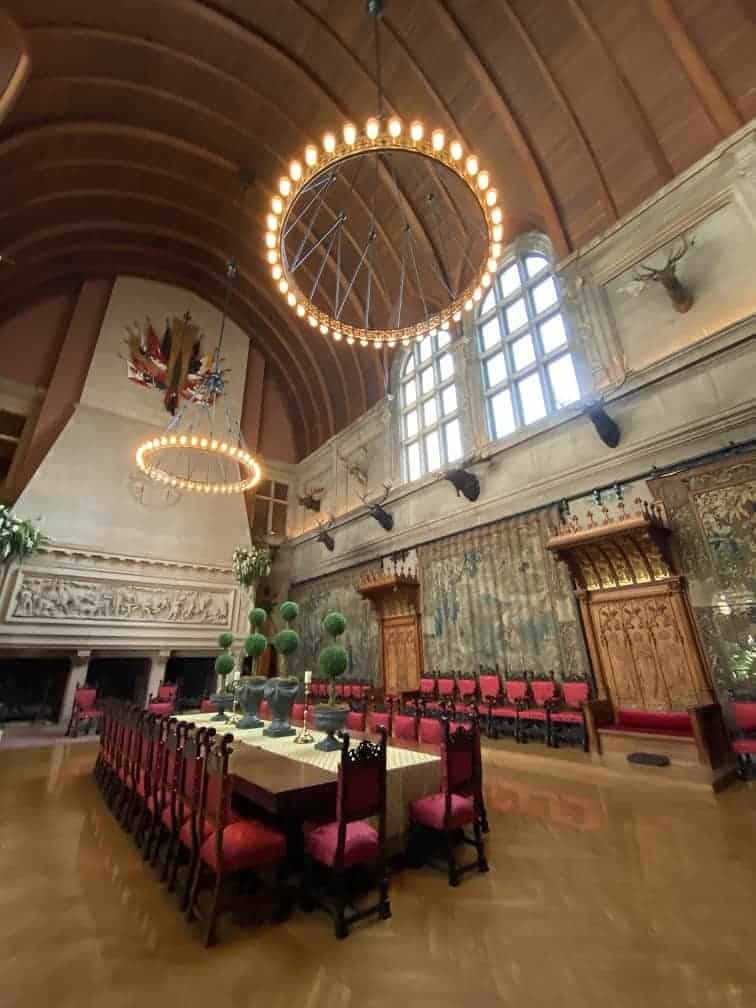
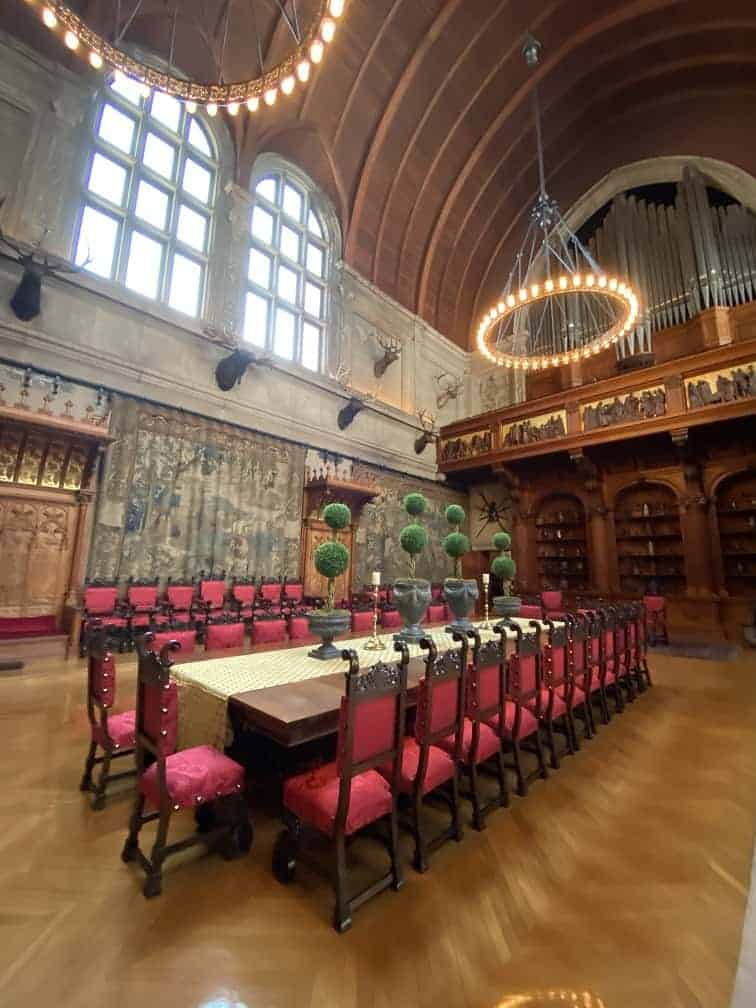
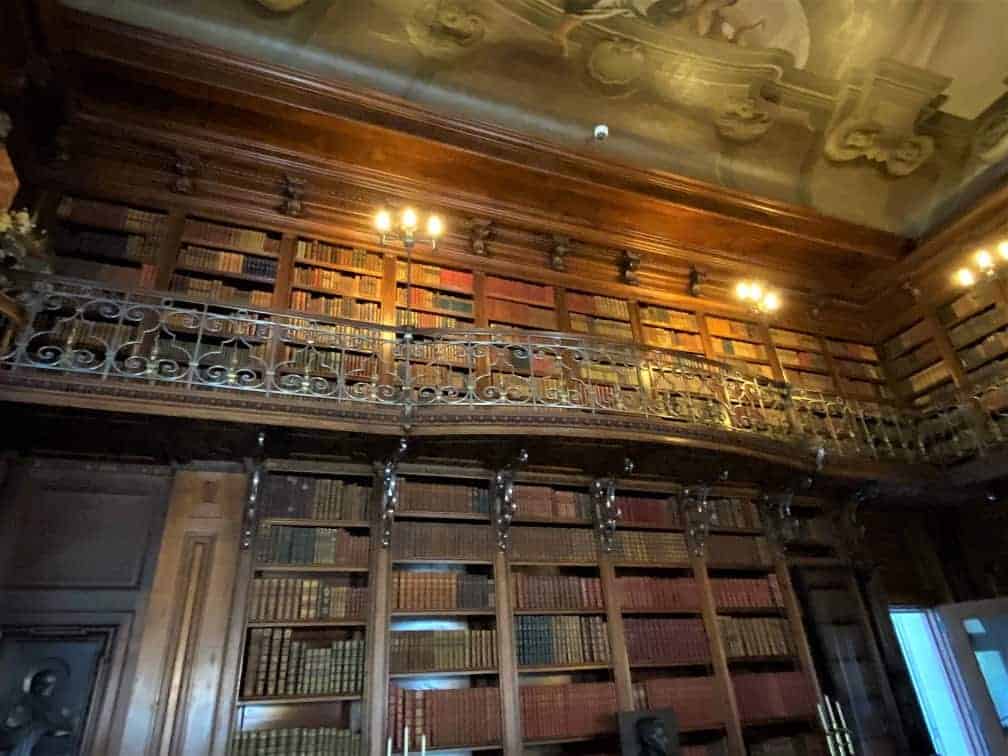

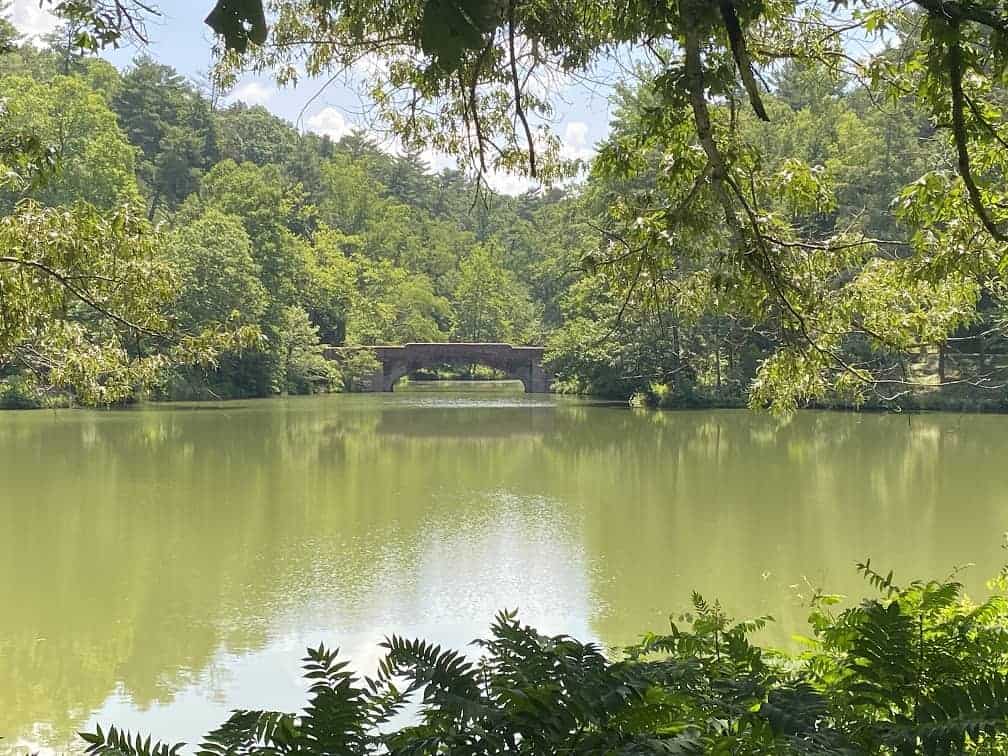
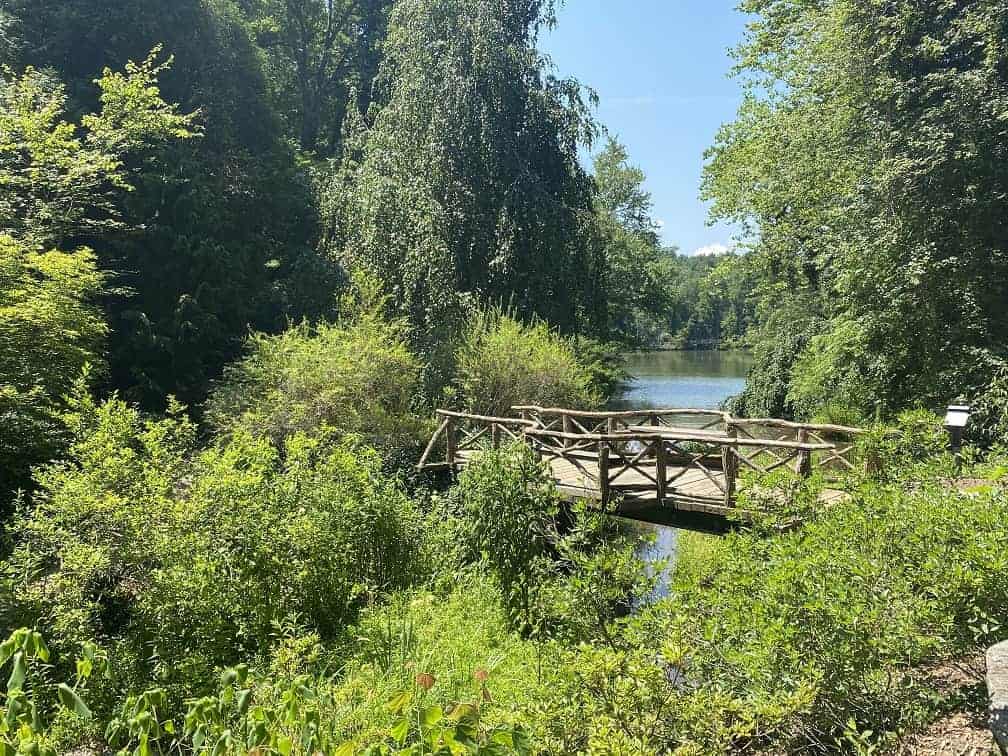
The writing is so bad that it’s hard to read through. American’s? It should be Americans.
Thank you so much for catching one typo out of 3247 words:)
Much appreciated. Nikki
Do we purchase tickets before our trip to the Biltmore?
During covid, yes you needed to but I would suggest reaching out as lots of businesses are open as usual. And, normally getting a ticket same day is not an issue. Hope you enjoy it:)
Nikki
Amazing! I came across a post on the estate and still can’t get over the swimming pool.
Thank you! You know no matter how many times I have seen it I am stiff baffled but the pool. I would love it to be full and usable!
Nikki
Thank you! It will be our first trip when the situation is better and I realize the more I learn the more I’ll enjoy it.
I think going before the travel industry catches up might be prudent!
Hi there,
You are more than welcome and thanks for joining us :) Yes, if you can sneak in before travel picks up that would be your best bet. We had it all to ourselves as they space out the entry… one group of together people (even a couple) by 15 mins or so. Just make sure you reserve in advance. Nikki